Happy Birthday, Boris Karloff!
Born on this date in 1887, William Henry Pratt no doubt had little inkling that he was destined to become a horror film icon and one of the silver screen’s most beloved performers. After being educated at various London schools, he intended on studying for the consular service at King’s College London. He dropped out around 1909, working at various odd jobs until his yen for the stage developed. He moved to Canada that same year to appear in stage shows, and it’s long been suspected that, because Pratt feared bringing embarrassment to his family through his pursuit of a career in acting, he changed his name to…“Boris Karloff.”
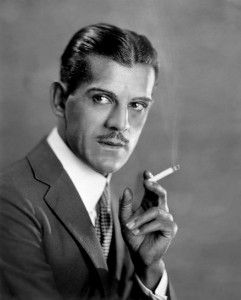 For the young Karloff, an acting career was satisfying in every way but financial; during his halcyon stage years in Canada and later the U.S., he was often forced to take supplemental menial jobs to keep body and soul together. Having made his way to Hollywood, he continued his craft with small parts in silent films (The Bells, Two Arabian Knights) while occasionally landing larger roles in silent and sound serials like The Hope Diamond Mystery (1920) and King of the Kongo (1929). It wasn’t until 1931 that things began to turn around for Boris; he had a small but unforgettable role in the Howard Hawks-directed The Criminal Code (reprising a role he played on stage), and nice showcases in both Five Star Final and The Guilty Generation.
For the young Karloff, an acting career was satisfying in every way but financial; during his halcyon stage years in Canada and later the U.S., he was often forced to take supplemental menial jobs to keep body and soul together. Having made his way to Hollywood, he continued his craft with small parts in silent films (The Bells, Two Arabian Knights) while occasionally landing larger roles in silent and sound serials like The Hope Diamond Mystery (1920) and King of the Kongo (1929). It wasn’t until 1931 that things began to turn around for Boris; he had a small but unforgettable role in the Howard Hawks-directed The Criminal Code (reprising a role he played on stage), and nice showcases in both Five Star Final and The Guilty Generation.
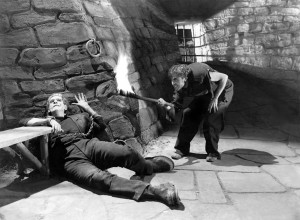 The Criminal Code helped him land the part that made him a star: the monstrous creation that sprang from the laboratory of the doctor known as Frankenstein (1931). He almost didn’t get to play The Creature; Universal’s resident “monster” star Bela Lugosi had originally been cast, but Lugosi’s screen test made studio head Carl Laemmle laugh out loud. Although Karloff wasn’t billed in his role in Frankenstein (he’s credited as simply “?”), it did not take long before Universal realized that the actor was well on his way to becoming the new face of horror. Films like The Mummy (1932) and The Old Dark House (1932) showcased his incredible talent, and he was also paired with his rival Bela in outings like The Black Cat (1934) and The Raven (1935). Karloff also reprised The Monster in a follow-up to Frankenstein, Bride of Frankenstein (1935)—which some have argued is even better than the original. (This time, there was none of that “?” malarkey—the actor simply went by “Karloff.”)
The Criminal Code helped him land the part that made him a star: the monstrous creation that sprang from the laboratory of the doctor known as Frankenstein (1931). He almost didn’t get to play The Creature; Universal’s resident “monster” star Bela Lugosi had originally been cast, but Lugosi’s screen test made studio head Carl Laemmle laugh out loud. Although Karloff wasn’t billed in his role in Frankenstein (he’s credited as simply “?”), it did not take long before Universal realized that the actor was well on his way to becoming the new face of horror. Films like The Mummy (1932) and The Old Dark House (1932) showcased his incredible talent, and he was also paired with his rival Bela in outings like The Black Cat (1934) and The Raven (1935). Karloff also reprised The Monster in a follow-up to Frankenstein, Bride of Frankenstein (1935)—which some have argued is even better than the original. (This time, there was none of that “?” malarkey—the actor simply went by “Karloff.”)
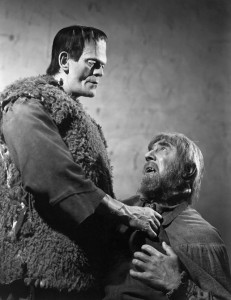 A public backlash against horror movies discouraged Universal from continuing their franchise for a few years, but Boris proved he could do more than just growl and grunt. Among the films on his resume were Scarface (1932—he doesn’t strike people as a gangster type, but he makes it work), The House of Rothschild (1934), The Lost Patrol (1934) and Charlie Chan at the Opera (1936), one of the best entries in the Charlie Chan series. Boris would tackle the role of the Monster one more time in 1939’s Son of Frankenstein before passing the role onto others. Though his horror films made his fame and fortune, they unfortunately had a negative effect in that the actor also wound up gracing a lot of programmers and B-pictures. For example, in 1938, he began the first of several Monogram quickies playing Hugh Wiley’s literary sleuth James Lee Wong (perhaps because Peter Lorre was enjoying success as John P. Marquand’s Mr. Moto). The Wong movies weren’t much to write home about…but Boris, ever the professional, always gave his all.
A public backlash against horror movies discouraged Universal from continuing their franchise for a few years, but Boris proved he could do more than just growl and grunt. Among the films on his resume were Scarface (1932—he doesn’t strike people as a gangster type, but he makes it work), The House of Rothschild (1934), The Lost Patrol (1934) and Charlie Chan at the Opera (1936), one of the best entries in the Charlie Chan series. Boris would tackle the role of the Monster one more time in 1939’s Son of Frankenstein before passing the role onto others. Though his horror films made his fame and fortune, they unfortunately had a negative effect in that the actor also wound up gracing a lot of programmers and B-pictures. For example, in 1938, he began the first of several Monogram quickies playing Hugh Wiley’s literary sleuth James Lee Wong (perhaps because Peter Lorre was enjoying success as John P. Marquand’s Mr. Moto). The Wong movies weren’t much to write home about…but Boris, ever the professional, always gave his all.
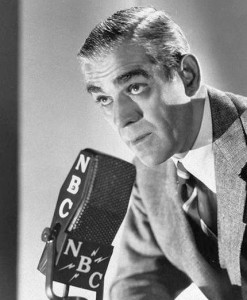 The medium of radio would provide Boris Karloff an outlet to continue his reputation as entertainment’s premiere horror menace. Boris appeared a number of times on Arch Oboler’s Lights Out – notably in an episode entitled “Cat Wife” in which Karloff portrays a man whose nasty, vindictive wife morphs into a giant feline. The actor also visited Inner Sanctum on several occasions, not to mention a 1944 Blue Network horror anthology, Creeps by Night. Karloff sat in on the panel of Information, Please, and joshed with comedians like Fred Allen, Jack Benny and Bergen & McCarthy while poking fun at his horror image on programs like Duffy’s Tavern. Boris even got the opportunity to exercise his dramatic chops on The Theatre Guild on the Air and The NBC University Theatre.
The medium of radio would provide Boris Karloff an outlet to continue his reputation as entertainment’s premiere horror menace. Boris appeared a number of times on Arch Oboler’s Lights Out – notably in an episode entitled “Cat Wife” in which Karloff portrays a man whose nasty, vindictive wife morphs into a giant feline. The actor also visited Inner Sanctum on several occasions, not to mention a 1944 Blue Network horror anthology, Creeps by Night. Karloff sat in on the panel of Information, Please, and joshed with comedians like Fred Allen, Jack Benny and Bergen & McCarthy while poking fun at his horror image on programs like Duffy’s Tavern. Boris even got the opportunity to exercise his dramatic chops on The Theatre Guild on the Air and The NBC University Theatre.
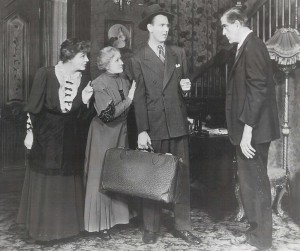 In 1941, Boris Karloff was wowing critics with his stage work as a homicidal maniac in the black comedy Arsenic and Old Lace—the in-joke of the play was that his character was repeatedly mistaken for Karloff due to some botched plastic surgery. A film adaptation of the hit went into production at that time…but unfortunately, the play’s producers would not allow Boris to appear in the movie because he was the main attraction for Broadway audiences. (Raymond Massey wound up playing the part in the film, which wasn’t released until 1944, after the stage play had finished its run.) Had Boris been allowed to make the film, it would probably be more beloved than it is today (he eventually did get to do a version of Arsenic in a 1962 episode of TV’s Hallmark Hall of Fame). However, we shouldn’t forget the excellent film work that he did do at that time, particularly a trio of films produced by the legendary Val Lewton: The Body Snatcher (1945—his last film with Lugosi), Isle of the Dead (1945) and Bedlam (1946). The actor also continued to demonstrate his comedic abilities in appearances with Danny Kaye (The Secret Life of Walter Mitty) and Abbott & Costello (Abbott & Costello Meet the Killer, Boris Karloff).
In 1941, Boris Karloff was wowing critics with his stage work as a homicidal maniac in the black comedy Arsenic and Old Lace—the in-joke of the play was that his character was repeatedly mistaken for Karloff due to some botched plastic surgery. A film adaptation of the hit went into production at that time…but unfortunately, the play’s producers would not allow Boris to appear in the movie because he was the main attraction for Broadway audiences. (Raymond Massey wound up playing the part in the film, which wasn’t released until 1944, after the stage play had finished its run.) Had Boris been allowed to make the film, it would probably be more beloved than it is today (he eventually did get to do a version of Arsenic in a 1962 episode of TV’s Hallmark Hall of Fame). However, we shouldn’t forget the excellent film work that he did do at that time, particularly a trio of films produced by the legendary Val Lewton: The Body Snatcher (1945—his last film with Lugosi), Isle of the Dead (1945) and Bedlam (1946). The actor also continued to demonstrate his comedic abilities in appearances with Danny Kaye (The Secret Life of Walter Mitty) and Abbott & Costello (Abbott & Costello Meet the Killer, Boris Karloff).
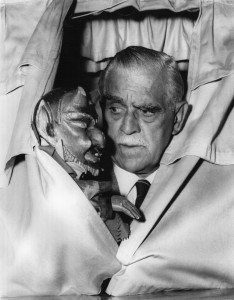 Boris Karloff was one of the first film stars to test the waters of television. In 1949, he hosted a television horror anthology (that was also broadcast on radio) entitled Starring Boris Karloff…as well as playing the titular role in the syndicated series Colonel March of Scotland Yard. He guest-starred on TV series like Suspense, Lights Out, Shirley Temple Storybook and The Gale Storm Show in the 50s, and favorites like Route 66, The Wild Wild West, I Spy and The Girl from U.N.C.L.E. the following decade. His best-remembered boob tube showcase remains Thriller, an anthology series televised on NBC from 1960-62 that author Stephen King once declared “the greatest horror series ever to air on television.” While Boris was the weekly host, he also acted on occasion in such memorable episodes as “Dialogues with Death” and “The Incredible Doktor Markesan.”
Boris Karloff was one of the first film stars to test the waters of television. In 1949, he hosted a television horror anthology (that was also broadcast on radio) entitled Starring Boris Karloff…as well as playing the titular role in the syndicated series Colonel March of Scotland Yard. He guest-starred on TV series like Suspense, Lights Out, Shirley Temple Storybook and The Gale Storm Show in the 50s, and favorites like Route 66, The Wild Wild West, I Spy and The Girl from U.N.C.L.E. the following decade. His best-remembered boob tube showcase remains Thriller, an anthology series televised on NBC from 1960-62 that author Stephen King once declared “the greatest horror series ever to air on television.” While Boris was the weekly host, he also acted on occasion in such memorable episodes as “Dialogues with Death” and “The Incredible Doktor Markesan.”
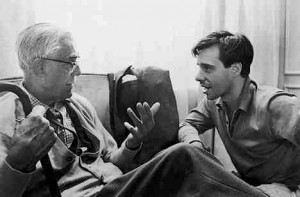 By the 1960s, even though he had fewer film roles, Boris remained a pop culture icon. One of his all-time best horror outings was in the Mario Bava-directed Black Sabbath (1964), and he made a number of movies for American International Pictures, including The Terror (1963), The Comedy of Terrors (1963) and The Raven (1963)—a wonderful horror comedy that also features Vincent Price and Peter Lorre. In fact, it was because Karloff owed director-producer Roger Corman a few days’ work that he was cast in the cult classic Targets (1968), as a faded horror actor (named Byron Orlok) who’s convinced his kind of movie terror can’t compete with the real horrors of today. Targets, directed by newcomer Peter Bogdanovich, wasn’t technically Boris’ last film (he appeared in four Mexican horror quickies released sometime afterward), but I like to consider it so. He died on February 2, 1969—a notation on a plaque inside St. Peter’s Covent Garden (in London) reads: “He Nothing Common Did or Mean/Upon That Memorable Scene.”
By the 1960s, even though he had fewer film roles, Boris remained a pop culture icon. One of his all-time best horror outings was in the Mario Bava-directed Black Sabbath (1964), and he made a number of movies for American International Pictures, including The Terror (1963), The Comedy of Terrors (1963) and The Raven (1963)—a wonderful horror comedy that also features Vincent Price and Peter Lorre. In fact, it was because Karloff owed director-producer Roger Corman a few days’ work that he was cast in the cult classic Targets (1968), as a faded horror actor (named Byron Orlok) who’s convinced his kind of movie terror can’t compete with the real horrors of today. Targets, directed by newcomer Peter Bogdanovich, wasn’t technically Boris’ last film (he appeared in four Mexican horror quickies released sometime afterward), but I like to consider it so. He died on February 2, 1969—a notation on a plaque inside St. Peter’s Covent Garden (in London) reads: “He Nothing Common Did or Mean/Upon That Memorable Scene.”
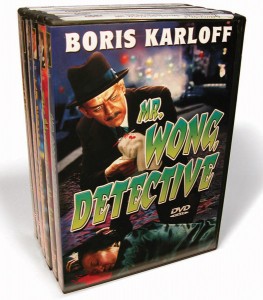 I’ve never made it a secret that I have been a passionate fan of both Boris Karloff and his film legacy…and I really had to reign in the gushing, otherwise this blog post would have gone on forever. Here at Radio Spirits, we feature much of Boris’ work in the aural medium: Lights Out, Everybody! features the classic “Cat Wife” episode mentioned above. You can hear Boris cut up on broadcasts with Fred Allen (The Fred Allen Show) and Jack Benny (No Place Like Home), and he can also be heard on two shows featured on our Happy Halloween! collection (The Edgar Bergen & Charlie McCarthy Show and Sealtest Variety Theatre). For a visual Boris, why not check out some episodes of his 1958 boob tube anthology The Veil—which you’ll find on Lights Out: Volume 1. And for the die-hard Karloff fan, you can revisit his role as the inscrutable sleuth Mr. Wong in Mr. Wong, Detective: The Complete Collection. (Here’s where I get to say: “Tell them Boris sent you!”)
I’ve never made it a secret that I have been a passionate fan of both Boris Karloff and his film legacy…and I really had to reign in the gushing, otherwise this blog post would have gone on forever. Here at Radio Spirits, we feature much of Boris’ work in the aural medium: Lights Out, Everybody! features the classic “Cat Wife” episode mentioned above. You can hear Boris cut up on broadcasts with Fred Allen (The Fred Allen Show) and Jack Benny (No Place Like Home), and he can also be heard on two shows featured on our Happy Halloween! collection (The Edgar Bergen & Charlie McCarthy Show and Sealtest Variety Theatre). For a visual Boris, why not check out some episodes of his 1958 boob tube anthology The Veil—which you’ll find on Lights Out: Volume 1. And for the die-hard Karloff fan, you can revisit his role as the inscrutable sleuth Mr. Wong in Mr. Wong, Detective: The Complete Collection. (Here’s where I get to say: “Tell them Boris sent you!”)

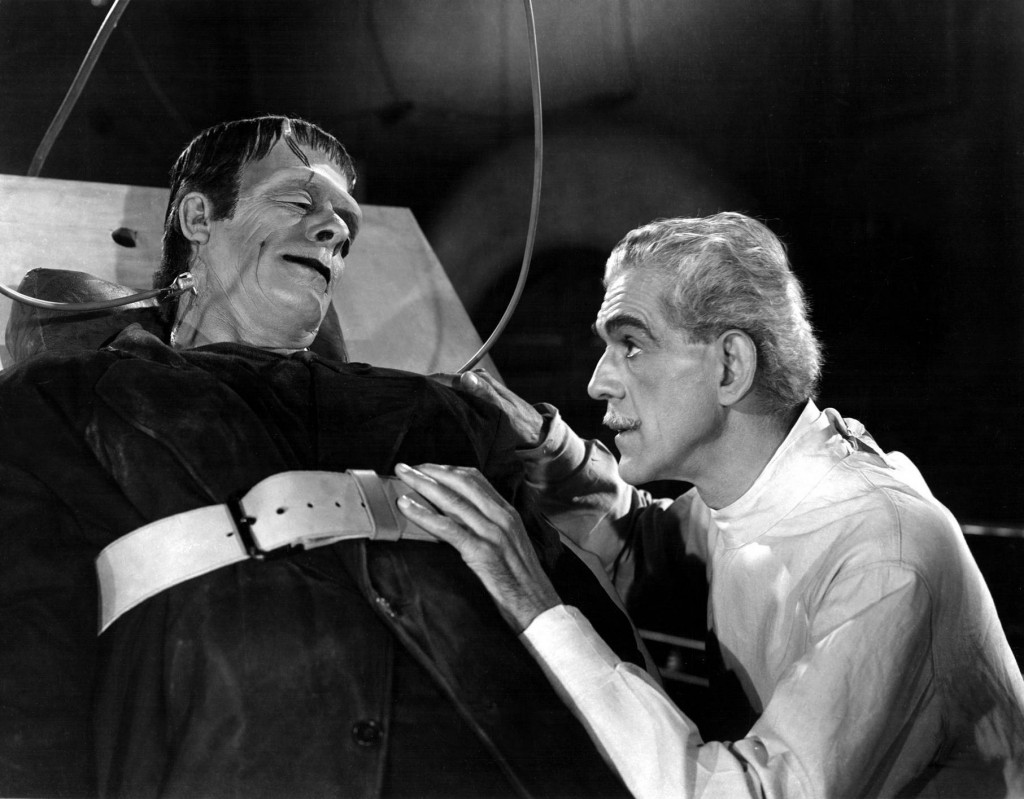

I’ve always loved him most as “The Grinch”. That was my favorite Christmas show as a kid.